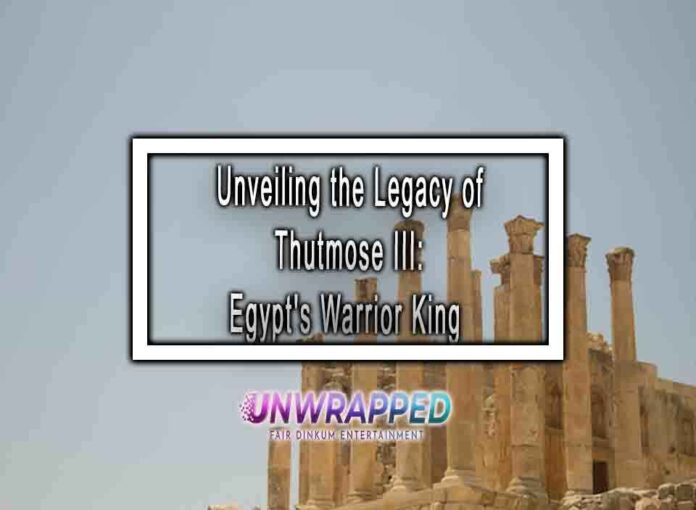Unveiling the Legacy of Thutmose III: Egypt’s Warrior King
1. Early Life and Ascension:
- Context: Thutmose III, also known as Thutmosis III, ascended to the throne of Egypt around 1479 BCE, initially as a co-regent with his stepmother Hatshepsut. His early years were shaped by the influence of the royal court.

2. Military Campaigns:
- Nubian Campaigns: Thutmose III inherited a military tradition and expanded the Egyptian empire through a series of military campaigns. He conducted campaigns in Nubia, securing the southern borders and extending Egyptian influence.
3. The Battle of Megiddo:
- Strategic Victory: The Battle of Megiddo, fought around 1457 BCE, is one of Thutmose III’s most significant military achievements. His tactical brilliance secured a decisive victory, establishing him as a formidable military leader.
4. Expansion into Canaan:
- Northern Campaigns: Thutmose III continued military campaigns into the Levant, particularly in Canaan and Syria. The conquests expanded Egyptian territories and established dominance in the region.
5. Monumental Construction:
- Building Projects: Thutmose III engaged in extensive building projects, constructing temples, monuments, and statues throughout Egypt. These projects celebrated his military successes and contributed to the glorification of the Egyptian state.
6. Karnak Temple Additions:
- Architectural Contributions: Thutmose III made significant additions to the Karnak Temple complex in Thebes. The Festival Hall and the Karnak Botanical Garden are among the structures attributed to his reign.
7. Administrative Reforms:
- Efficient Governance: Thutmose III implemented administrative reforms that streamlined governance and enhanced efficiency. His reign saw improvements in the bureaucracy, taxation, and the overall administration of the kingdom.
8. Artistic Patronage:
- Cultural Contributions: Thutmose III was a patron of the arts, supporting the creation of sculptures and reliefs that depicted his military triumphs and divine connections. These artistic representations celebrated the king’s achievements.
9. Integration of Foreign Deities:
- Cultural Syncretism: Thutmose III adopted a policy of integrating foreign deities into the Egyptian pantheon. This approach promoted cultural harmony and facilitated the assimilation of conquered regions into the Egyptian empire.
Thutmose III’s reign stands as a pivotal era in ancient Egyptian history. His military campaigns, administrative reforms, and cultural contributions shaped the empire’s trajectory and left a lasting legacy that influenced subsequent pharaohs and dynasties.











